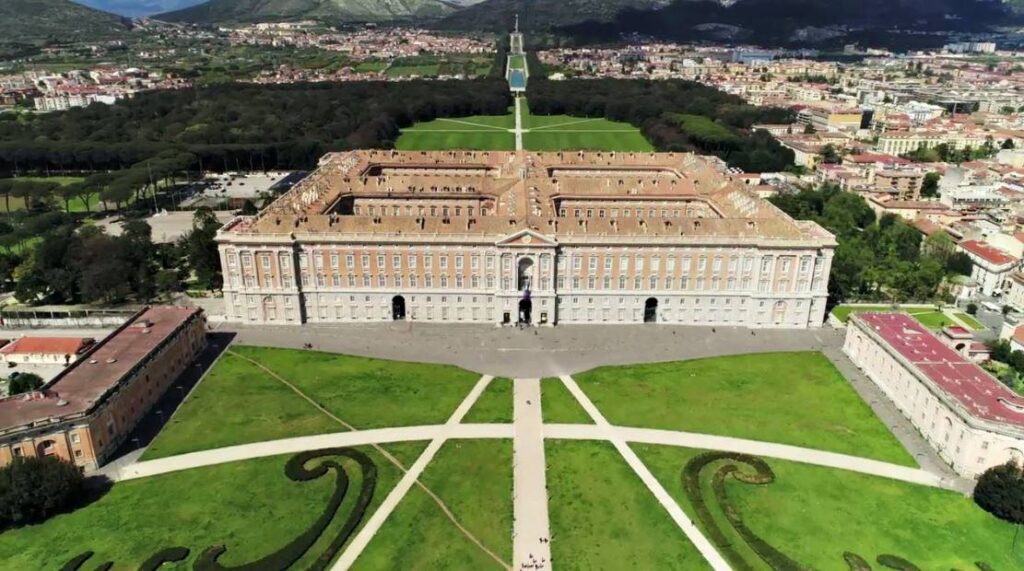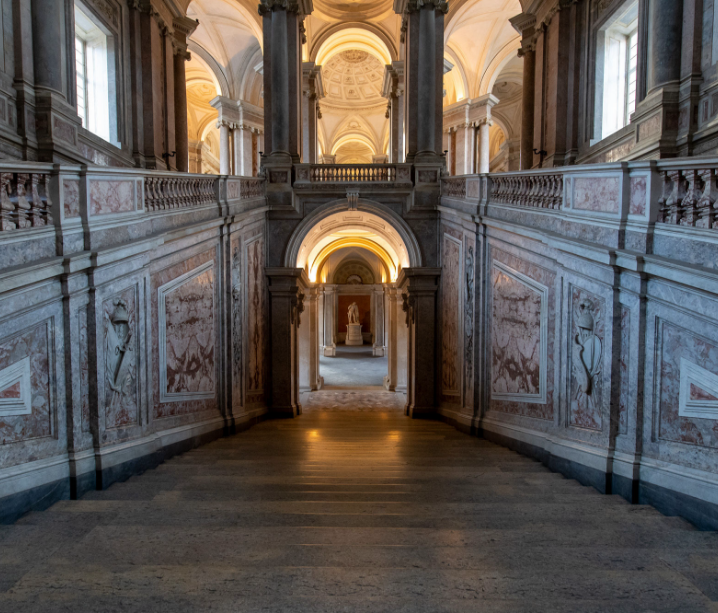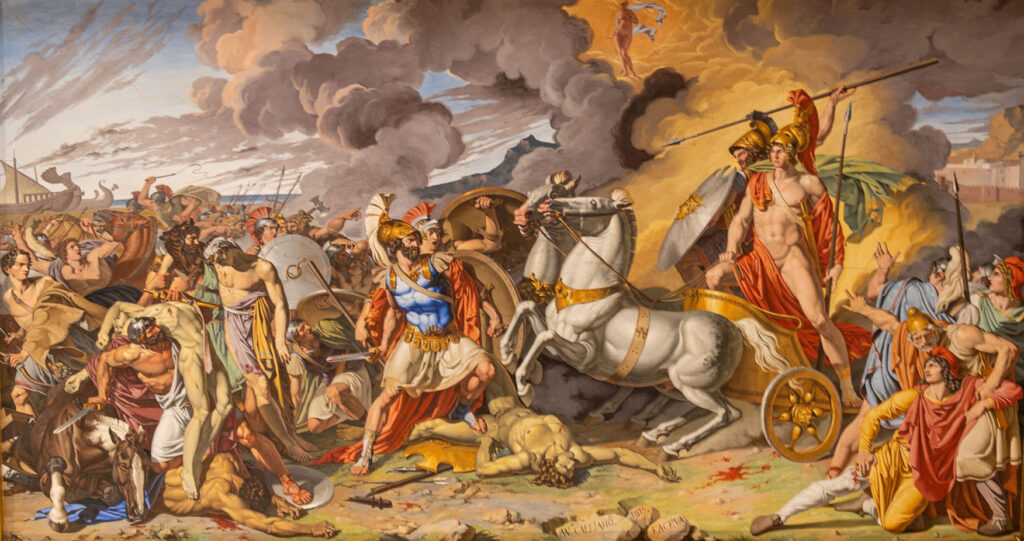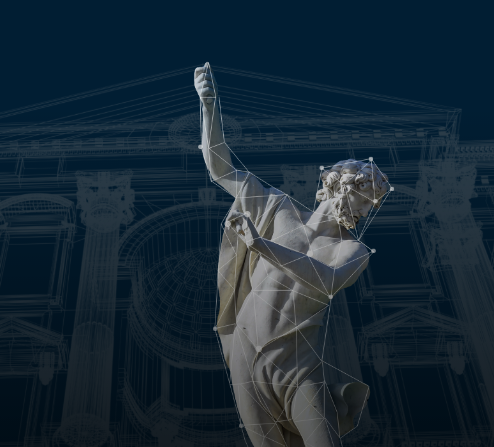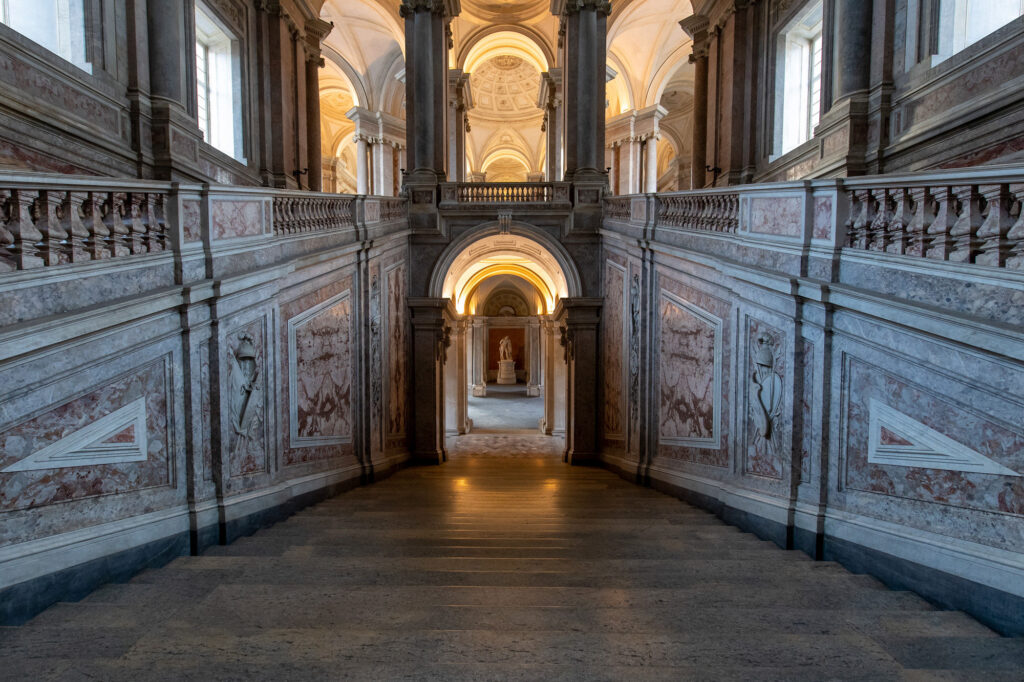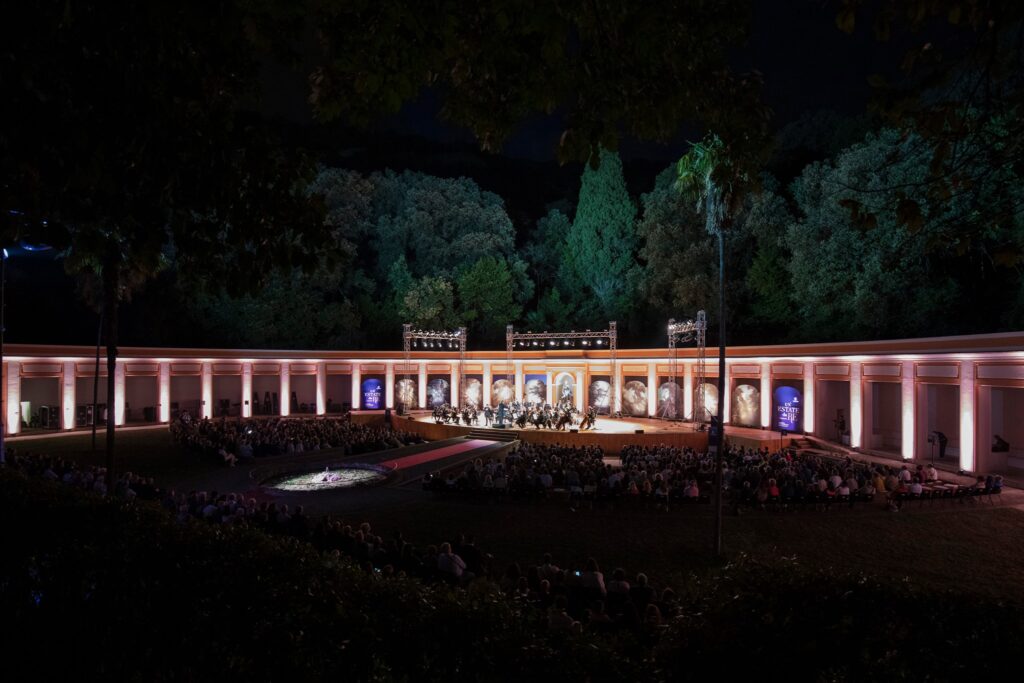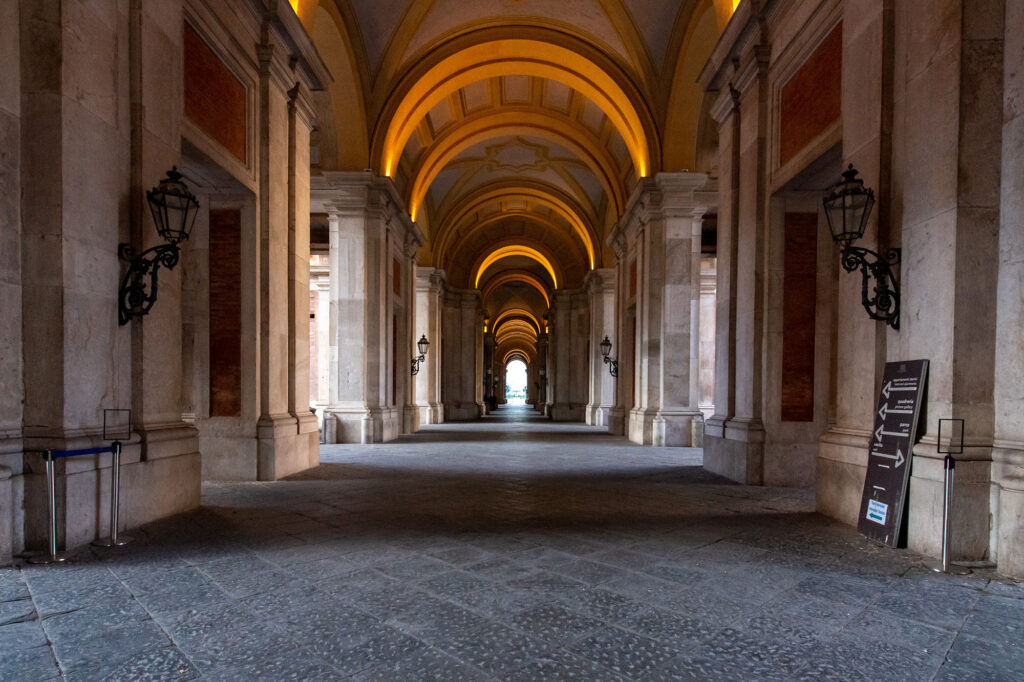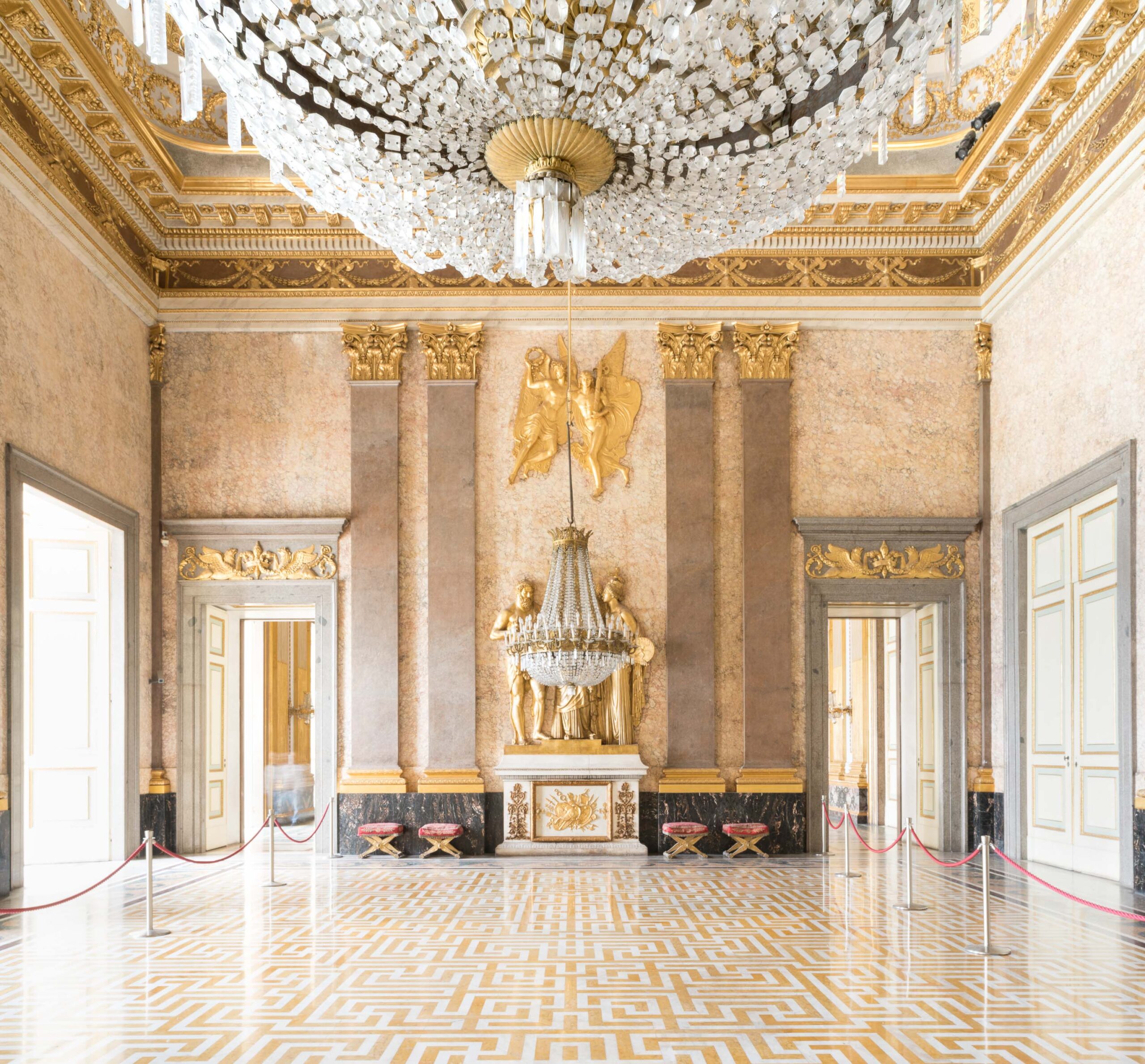In the labyrinth of the Goddess of Justice
The myth has it that Astrea, goddess of Justice, was the last divinity to leave the earth at the end of the Golden Age. During the French domination the fourth antechamber of the Throne Room is dedicated to her and decorated like the Mars room that precedes it.
The figure of Astrea, recognizable by the scales and pendulum as symbols of the equity of the kingdom, is represented in one of the gilded high-reliefs by Domenico Masucci, and by Jacques Berger in the painting on the vault. In portraying the goddess, Berger was probably inspired by Queen Caroline Murat who, like her husband, followed the Masonic ideals depicted in the iconography of the room.
The labyrinth’s motif, on the Carrara marble floor, evokes esoteric meanings.
The decorations in the room were retouched by the Bourbons during the Restoration: the golden Hercules sculpted next to Astrea holds the lily emblem of the Bourbons.

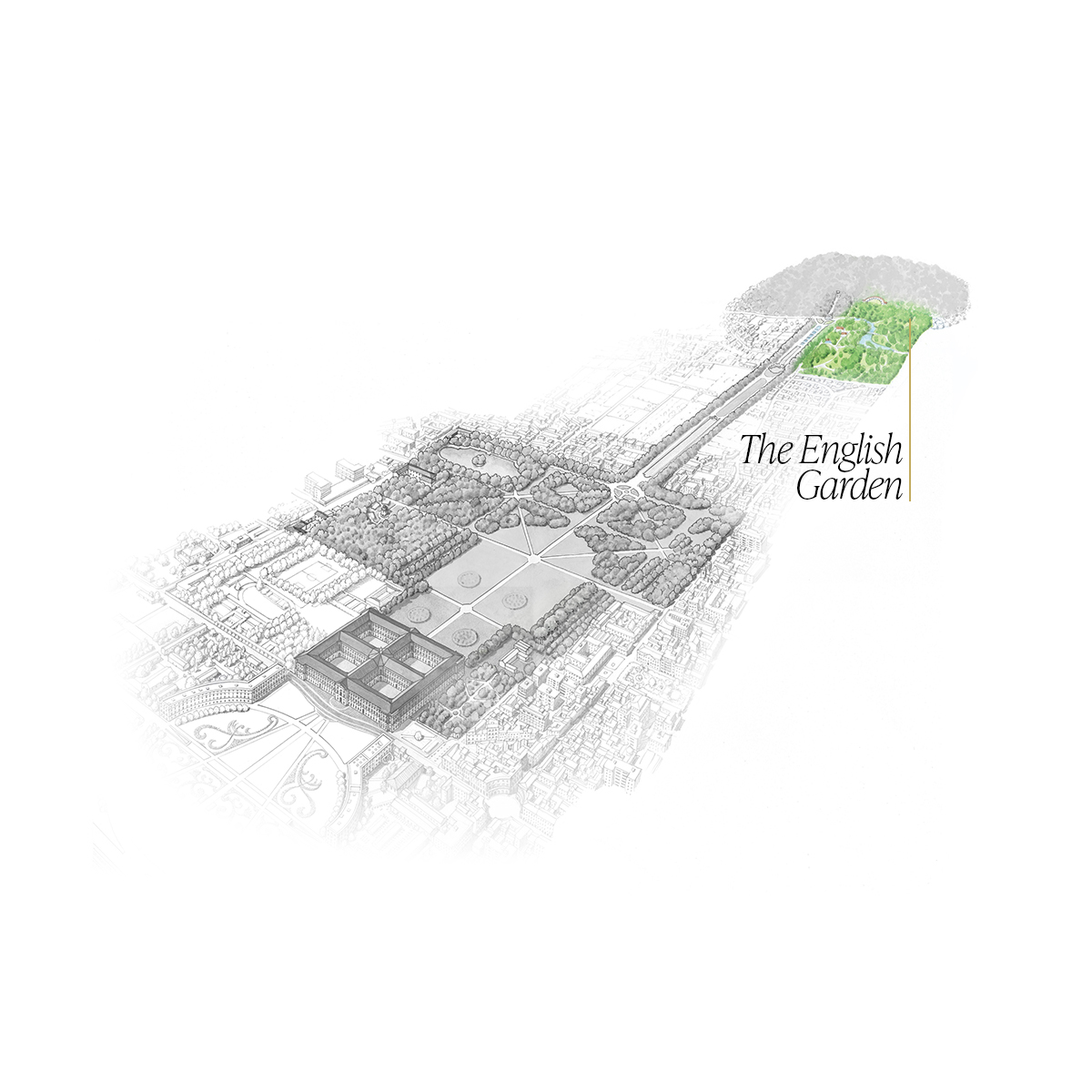

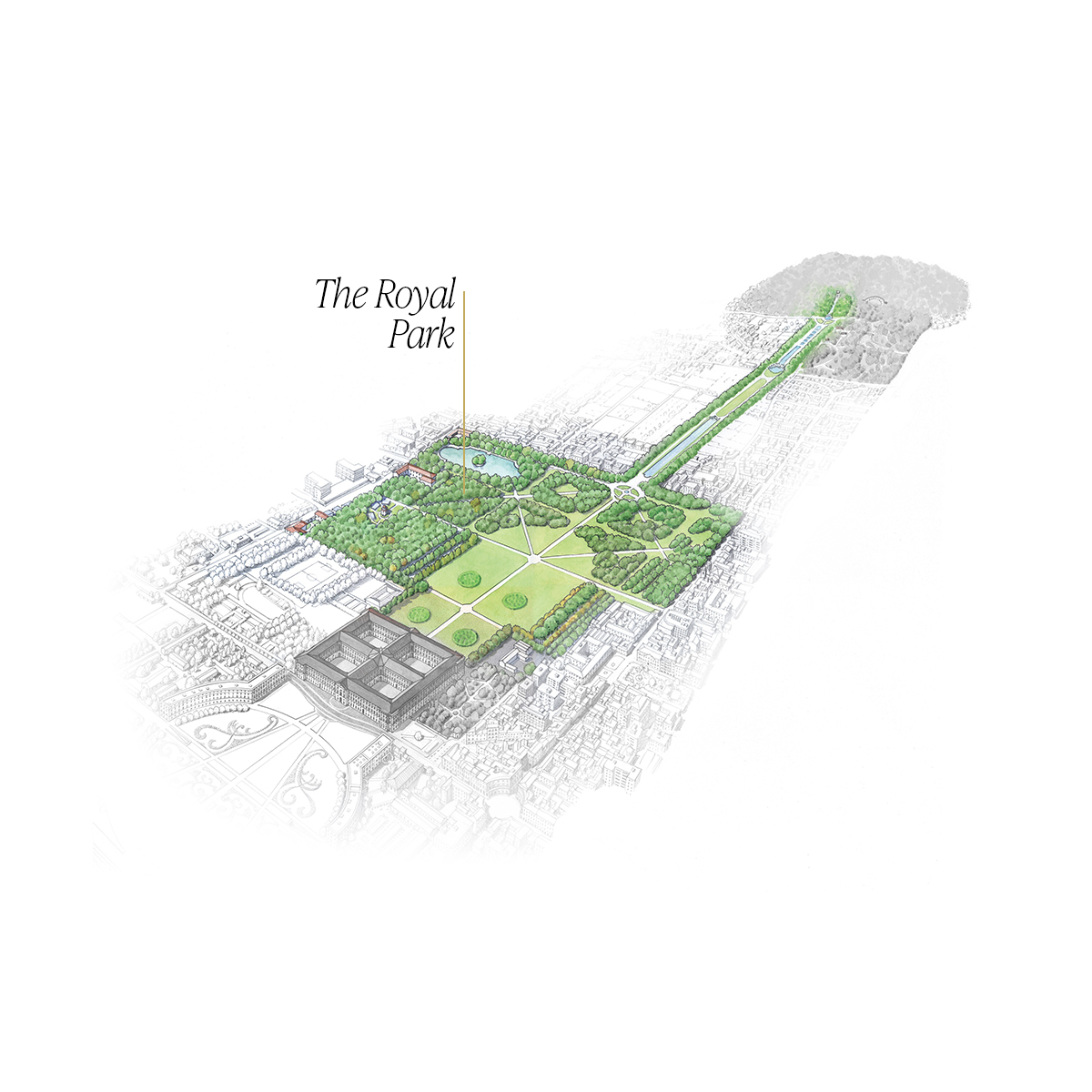

 Via d'acqua
Via d'acqua Castelluccia
Castelluccia Peschiera
Peschiera The Fountain of Dolphins
The Fountain of Dolphins The Fountain of Aeolus
The Fountain of Aeolus The Fountain of Ceres
The Fountain of Ceres The Fountain of Diana and Actaeon
The Fountain of Diana and Actaeon The Fountain of Venus and Adonis
The Fountain of Venus and Adonis The waterfall and Torrione
The waterfall and Torrione The Bosco Vecchio (Old Wood)
The Bosco Vecchio (Old Wood) The Margherita Fountain
The Margherita Fountain





